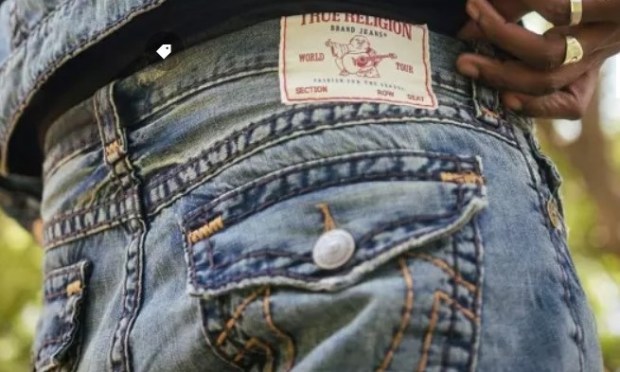How True Religion Is Stitching Together Its Comeback

During the early 2000s, True Religion earned praise for its distinctive designs, top-notch craftsmanship, and inventive denim strategies. However, its ascent was matched by a swift decline, culminating in its bankruptcy in 2017.
“After a careful review, we are taking an important step to reduce our debt, reinvigorate True Religion’s iconic brand and position the company for future growth and success,” said former True Religion CEO and President John Ermatinger at the time.
Six years later, True Religion is looking to make a comeback by embracing a new strategy in its product offerings and addressing consumer needs and desires. While remaining faithful to its core values, the brand aims to convey a sense of premium quality that is now more accessible to a broader audience.
In a conversation with PYMNTS, Jim Kushner, executive vice president of North America Wholesale Sales at True Religion, dives into the brand’s strategy to resonate with consumers this time and unpacks how wholesale will play a key role in that. Kushner also delves into how the brand is leveraging trends like the Y2K resurgence — featuring logos, bold colors, low-rise waistlines and denim everything, as a catalyst for its comeback.
“It’s exactly why I’m here — to create a more significant brand presence and transform our brands into more of a lifestyle brand, extending beyond traditional categories like denim and tees,” Kushner says.
“We are beginning to achieve that, and as we experience success, we continue to test and learn.”
Failing to Keep Up With Demand
While the brand had initially gained acclaim for its distinctive denim designs, the failure to diversify into other areas of style, such as comfort-focused clothing, may have left True Religion out of sync with the evolving tastes of consumers.
In 2017, Marshal Cohen, chief industry analyst at The NPD Group said, “Athleisure is a consumer born trend. Consumers decided they wanted to dress that way. Americans decided we want to look athletic. Even if we don’t do yoga, we want to look like we do.”
True Religion’s commitment to the denim aesthetic and failure to meet the evolving demands for varied and contemporary fashion choices may have prompted consumers to shop elsewhere, contributing to the brand’s financial challenges.
True Religion’s Diversification
Kushner notes that today there is a clear interest in exploring new categories, despite the challenges posed by the business environment, as many buyers and retailers are seeking newness.
“This presents a substantial opportunity for us,” Kushner says.
Kushner touches on collaborations, which, while not always financially lucrative, are viewed as enriching moments for the brand, creating a halo effect. Some collaborations, such as the one with Playboy, are strategically chosen for their commercial potential and ability to generate volume.
Kushner also highlights that True Religion is aligning with prevailing trends with offerings like cargos, wide-legged designs, and trendy baggy silhouettes. The brand’s sense of trendiness extends beyond jeans, encompassing skirts, denim truckers, and jackets of varying lengths, shapes, and sizes.
Additionally, Kushner states that True Religion aims to extend its presence in the non-denim sector, focusing on activewear, where it is experiencing success with items like hoodies and other related apparel.
State of D2C Brands
PYMNTS recently reported on the need to revise the direct-to-consumer (D2C) playbook. Brands are rediscovering the potency of retail, particularly as consumers become more frugal in their spending.
Companies like Caraway (specializing in cookware) and Lululemon are delving into collaborations to broaden their consumer reach. This strategic shift is a direct response to findings from the “New Reality Check: The Paycheck-to-Paycheck Report — The Savings Deep Dive Edition,” a study conducted by PYMNTS Intelligence and LendingClub.
According to the report, consumers have been dipping into their shrinking savings to navigate the challenges posed by inflation. This intensifies the pressure on retailers, compelling them to adjust their strategies to align with the evolving economic landscape.
Read more: D2C Brands Favor Retail as Consumers Resist Spending
With that all in mind, Kushner notes that its wholesale partnerships are critical to its success this time.
True Religion’s Accessibility Mission
While still keeping its premium quality, Kushner notes that the brand has made itself more attainable to the everyday consumer, with price points hovering around the $100-$200 range.
The brand is also leveraging retail partnerships for wholesale opportunities to reintroduce itself to the market, with Urban Outfitters being one of the key collaborators.
“We’re excited about the partnership with Urban Outfitters given their customer base and our ability to connect True Religion with a broader range of shoppers, including younger Gen Z consumers,” Kushner said at the time of the announcement.
In collaboration with Urban Outfitters, True Religion is releasing a capsule collection that embraces the aesthetics of the early 2000s and Y2K trends. The collection showcases True Religion’s top-selling denim styles and include roomy cargo jeans, a denim maxi skirt, a long-sleeved graphic tee, and a utility vest with multiple pockets.
Kushner says creating collections based on trends like Y2K revitalizes the brand and establishes a nostalgic and generational appeal, particularly for those who first embraced the denim company when it initially entered the market.
“I think now we’re really appealing to a broader base of consumers based on our current position while maintaining the same level of quality and core ideas, positioning ourselves as an elevated, more premium brand,” he said.
“We’ve built a strong following, and we’re committed to further expanding on that foundation.”
Last year, True Religion pocketed $260 million in sales and is targeting $500 million in revenue by 2027.

